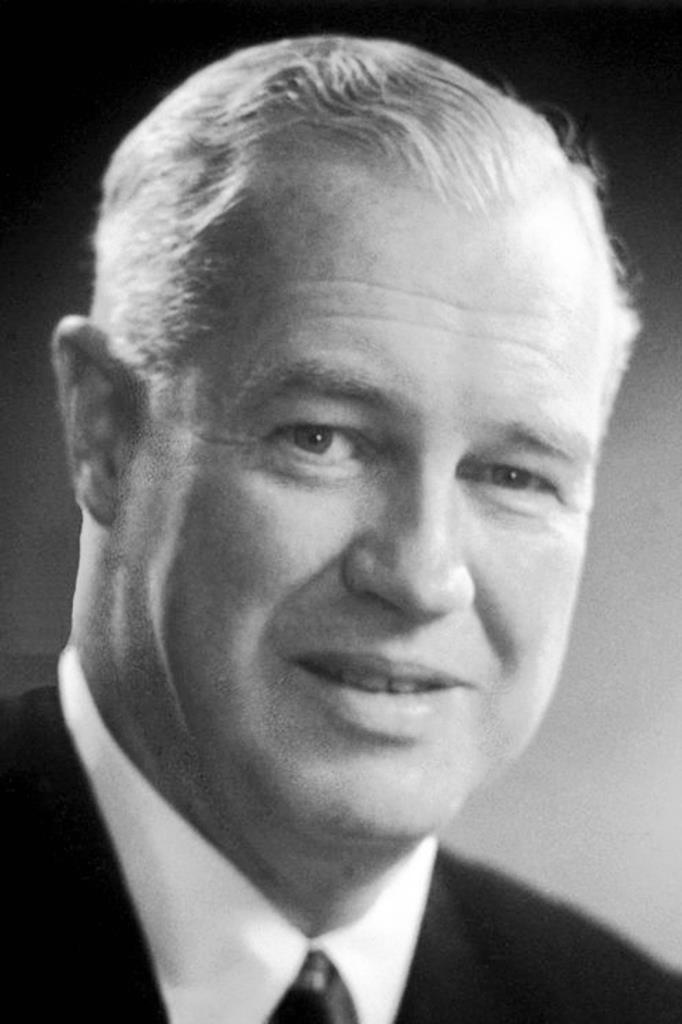Alexander Todd is known for his work on the chemistry of nucleotides, his work on Vitamin B1 and for unravelling the chemical structure of vitamin B12. Alexander Todd’s groundbreaking work on the structure of nucleic acids, not only led to Watson & Crick discovering the structure of DNA, but also helped in understanding the highly complex processes of nature and life, such as genetic characteristics and genetic diseases, and how these are passed on from one generation to the next.

Alexander Robertus Todd (Lord Todd) developed an interest in chemistry as an eight-year old while experimenting with iron filings from a toy chemistry set. Around four decades later, he was awarded the 1957 Nobel Prize in Chemistry and was ranked among the leading biochemists in the world. His award-winning work on the chemistry of nucleotides paved the way for Watson & Crick’s discovery of the double helix structure of DNA, an achievement that won these two scientists the 1962 Nobel Prize for Physiology or Medicine.
Another Nobel Laureate whose work had a connection with Alexander Todd’s research was the Indian origin biochemist Har Gobind Khorana. It was while doing postdoctoral research under Todd in his laboratory at Cambridge University that Khorana developed an interest in studying proteins and nucleic acids. He went on to win the Nobel in 1968 for cracking the genetic code.
Dr. Todd had a reputation for being very strict, but his students and peers respected his quality of straightforwardness and his loyalty to those who collaborated with him. When he was informed of being named as a winner of the Nobel Prize for his years of research on proteins, particularly nucleotides and nucleotide co-enzymes, he remarked that the news made him feel “slightly ludicrous”. He said the honour was “much more of a tribute to a lot of the boys” who had worked with him.
A couple of years earlier, in 1955, Todd had helped solve one of the most perplexing puzzles in chemistry at that time—the chemical structure of Vitamin B12. When interviewed by the press about this great achievement, on that occasion too he had emphasised the contributions of his collaborators and members of his research team.
Early life
Alexander R. Todd was born in Glasgow on 2 October, 1907, into a family that wasn’t too well off. He studied at Allan Glen’s School and then joined the University of Glasgow. Todd’s excellent academic performance during the first year got him a scholarship for the rest of the graduate course in Chemistry which he completed with First Class Honours.
After that, he went to Germany, and in 1931 received a Ph.D. from the Johann Wolfgang Goethe University of Frankfurt for his thesis on the chemistry of bile acids. On returning to England, he applied for and received a Research Fellowship from the ‘Royal Commission for the Exhibition of 1851’. This allowed him to join Oxford University to work under Sir Robert Robinson who later on received the 1947 Nobel Prize in Chemistry. Todd earned his second doctorate degree at Oxford.
When George Barger, professor of medical chemistry at the University of Edinburgh, sought Robinson’s advice for carrying out research on Vitamin B1, Robinson suggested Todd’s name because of his interest in working on natural products and the knowledge of microchemical techniques that he had acquired in Germany. And so, Todd was offered a grant from the Medical Research Council to study the structure of vitamin B1 at the University of Edinburgh. And although scientists in America and Germany beat him in the race for synthesising the vitamin, it was Todd’s synthesis that was found to be more elegant and better suited for commercial production.
At Edinburgh, Todd met Alison Dale, daughter of Nobel Prize laureate Henry Hallett Dale and a postgraduate researcher in the University’s pharmacology department. They got married in 1937, and soon afterwards Todd accepted the position of lecturer in biochemistry at the Lister Institute in London.
Career as an academic and researcher
Todd had begun researching the chemistry of Vitamin E towards the end of his stint in Edinburgh. At the Lister Institute he continued this investigation and also began studying the active ingredients in cannabis (marijuana).
He was barely 30 when he was offered the Chair of Organic Chemistry at the University of Manchester, then considered to be one of the three most distinguished chairs in Britain. At that time, there was a lot of uncertainty about the structure of some known nucleosides and nucleotides. Todd focused on establishing their structure and also began to synthesise nucleotide coenzymes. He continued with this line of research even after his appointment to the Chair of Organic Chemistry at Cambridge University in 1944. He and his team ultimately succeeded in discovering the structure of nucleosides and in 1949, accomplished the challenging feat of synthesising adenosine triphosphate (ATP). His pioneering work on nucleosides and nucleotides—the building blocks of DNA and RNA—earned him the prestigious Nobel Prize in 1957.
Todd spent most of his academic career as the Chair of Organic Chemistry at Cambridge University, holding this position from 1944 till his retirement in 1971. When he arrived at Cambridge, the Department of Chemistry was badly in need of revitalisation. In a short period of time, he and his dedicated team modernised the laboratories and remarkably transformed the Department’s intellectual environment as well as the working conditions.
Dr. Todd also taught at the California Institute of Technology, University of Chicago, the Massachusetts Institute of Technology, the University of Sydney, and Notre Dame University as a visiting professor. He served as the Chancellor of the University of Strathclyde from 1965 to 1991.
Exemplary achievements
Alexander Todd’s groundbreaking work on the structure of nucleic acids, not only led to Watson & Crick discovering the structure of DNA, but also helped in understanding the highly complex processes of nature and life, such as genetic characteristics and genetic diseases, and how these are passed on from one generation to the next.
Also, Todd’s research on Vitamin B1 and his discovery of the exact structure of Vitamin B12, made it possible to produce these vitamins synthetically for commercial application.
As the Chair of Organic Chemistry at Cambridge, Dr. Todd had inherited an ill-equipped department. The transformation he helped bring about, elevated it to one of the leading schools of chemistry in the world, a position it holds till today.
As a renowned organic chemist in Britain, Todd had the ability to attract and inspire highly skilled co-workers from across the world. His team at Manchester had proudly called themselves The Toddlers!
Honours and recognitions
Todd’s honours are too numerous to mention in one article. From 1952 to 1964, he held the position of chairman of the advisory council on scientific policy to the British government. He was knighted as Sir Alexander Todd in 1954 for distinguished service to the government and was given a life peerage and named Lord Todd, Baron Todd of Trumpington in 1962. He was made a member of the Order of Merit in 1977. From 1975 to 1980, he served as the President of the Royal Society of Chemistry.
In December 2005, on the 50th anniversary of the paper co-authored by Todd on ‘The First Chemical Synthesis of a Nucleotide’, the Royal Society of Chemistry installed a blue plaque in honour of Lord Todd at Cambridge University’s Department of Chemistry.
Todd Almighty
Lord Alexander Todd died at the age of 89 at his home in Cambridge on 10 January, 1997, following a heart attack.
Affectionately called Todd Almighty by his students, he was remembered by those who had known him as an outstanding scientist with an extraordinary memory and a great fondness for cigarettes.
In fact, in his autobiography—A Time to Remember—Todd mentions an interesting incident in 1941 while he was on a visit to the Defence Research Establishment at Porton when he walked into a restaurant on the premises and was delighted to see the barman was serving not just drinks, but cigarettes too. But when he asked for cigarettes, the barman informed him he had orders to offer cigarettes to people according to their rank—20 for officers, 10 for those ranked lower—and asked him for his.
In Todd’s words, here’s what happened next:
Now I really wanted those cigarettes so I drew myself up and said ‘I am the Professor of Chemistry at Manchester University.’
The barman contemplated on this for about thirty seconds and then said ‘I’ll give you five.’
Since that day I have had few illusions about the importance of professors!
Lord Todd had an imposing height of 6 ft 4 inches, but he soared to much greater heights as one of the world’s renowned organic chemists.
References
1. NobelPrize.org: Lord Todd – Biographical – Nobel Media AB 2019, https://www.nobelprize.org/prizes/chemistry/1957/todd/biographical/
2. University of Cambridge: Memories of Lord Todd – https://www.ch.cam.ac.uk/alumni/memories-lord-todd
3. John Cornforth: Obituary: Lord Todd – Independent, 16 January 1997. https://www.independent.co.uk/news/people/obituary-lord-todd-1283405.html
4. Royal Society of Chemistry: Plaque in Cambridge to honour the man who made DNA decoding possible – www.rcs.org, 9 December, 2005, https://www.rsc.org/AboutUs/News/PressReleases/2005/LordTodd.asp
5. Revolvy.con: Alexander R. Todd – https://www.revolvy.com/page/Alexander-R.-Todd?cr=1
6. Wolfgang Saxon: Lord Todd, 89, a Nobelist For Work on Nucleic Acids – New York Times, 15 Jan, 1997, https://www.nytimes.com/1997/01/15/world/lord-todd-89-a-nobelist-for-work-on-nucleic-acids.html
7. James Baddiley: Alexander Robertus, Baron Todd Of Trumpington – https://www.rse.org.uk/cms/files/fellows/obits_alpha/todd_lord.pdf
8. M. A. Shampo, R. A. Kyle, D. P. Steensma: Alexander Todd–British Nobel laureate – Mayo Clin Proc., March 2012; 87(3): e19, https://www.ncbi.nlm.nih.gov/pmc/articles/PMC3498063/.































